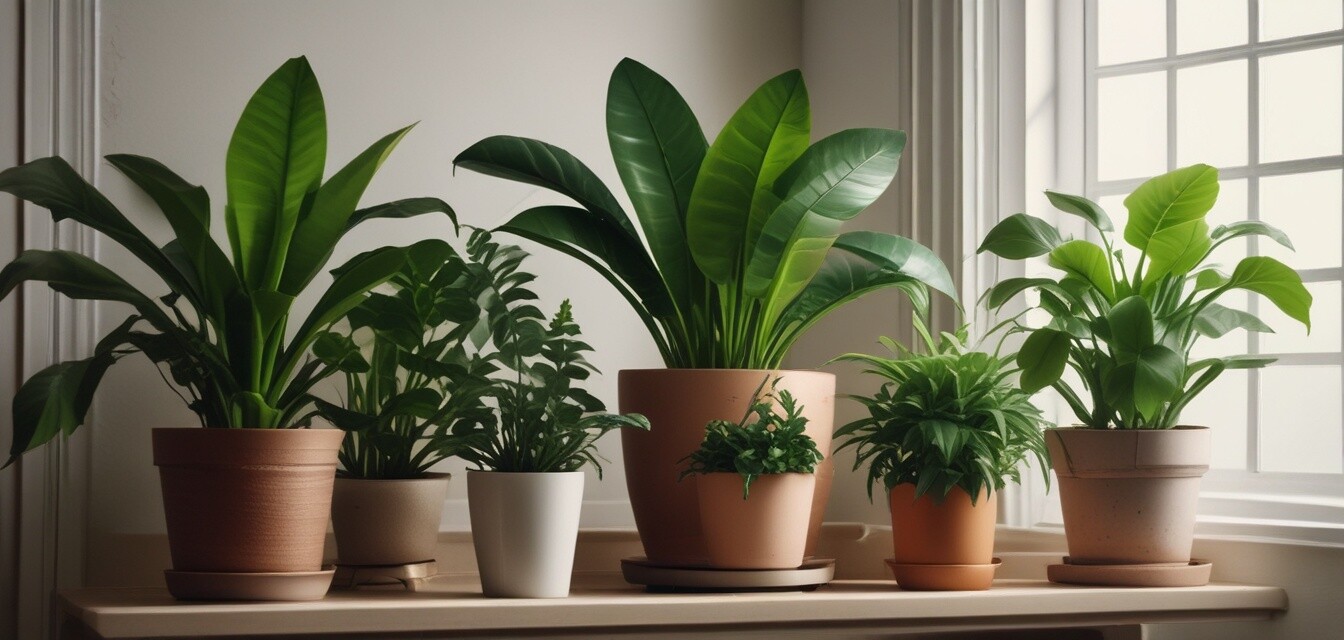
How to Create a Balanced Indoor Plant Care Routine
Key Takeaways
- Establish a regular watering schedule tailored to your plant types.
- Integrate fertilizing into your routine to promote healthy growth.
- Adjust environmental factors like light and humidity for optimal plant health.
- Monitor plant conditions regularly to detect issues early.
Caring for indoor plants can be a rewarding experience that enhances your living space and contributes to a healthier environment. However, establishing a balanced indoor plant care routine is crucial for maintaining beautiful and thriving greenery. This article will guide you through the essential components of a comprehensive care routine, including watering, fertilizing, and environmental adjustments.
Understanding Your Plants' Needs
Before diving into the specific aspects of plant care, it's essential to recognize that different species have varying requirements. Here are some common care factors to consider:
| Plant Type | Watering Frequency | Light Requirements | Humidity Preference |
|---|---|---|---|
| Succulents | Every 2-3 weeks | Bright, indirect light | Low humidity |
| Ferns | Weekly | Indirect light | High humidity |
| Pothos | Every 1-2 weeks | Low to bright, indirect light | Moderate humidity |
| Peace Lily | Weekly | Low to bright, indirect light | High humidity |
1. Establishing a Watering Schedule
Watering is one of the most critical aspects of plant care. Here are tips to help you establish an effective watering schedule:
- Know your plants: Understand the watering needs of each species.
- Check soil moisture: Use your finger to check the top inch of soil. If it's dry, it’s time to water.
- Adjust seasons: Plants require less water in winter compared to the growing season in spring and summer.
2. Incorporating Fertilization
Fertilizing your plants ensures that they receive the essential nutrients needed for growth. Here’s how to go about it:
- Choose the right fertilizer: Select a balanced fertilizer suitable for indoor plants.
- Frequency: Typically, fertilize every 4-6 weeks during the growing season.
- Follow instructions: Adhere to package guidelines to avoid over-fertilization.
3. Adjusting Environmental Factors
The right environmental conditions are vital for optimal plant health. Here are key factors to manage:
- Light: Position your plants to receive the appropriate amount of light, considering their specific needs.
- Humidity: Maintain humidity levels by misting plants, using a pebble tray, or a humidifier.
- Temperature: Most indoor plants thrive in temperatures between 65°F and 75°F (18°C - 24°C).
4. Monitoring Plant Health
Regularly checking on your plants can help you detect issues before they escalate.
- Look for signs of stress, such as yellowing leaves or wilting.
- Inspect for pests and take preventive measures.
- Adjust care routines if you notice changes in your plants’ growth or health.
5. Customizing Your Care Routine
Every plant owner should keep a care journal or use a plant care app to track watering, fertilizing, and any changes in environmental conditions. Customizing your care routine based on your plant’s specific needs will set you up for success.
Exploring More Care Tips
For more insights on specific plant care tips, check out our other articles in the Care Tips section. You can learn more about air-purifying plants, flowering indoor plants, and pet-friendly houseplants to enhance your indoor garden.
Pros
- Enhances the aesthetic appeal of living spaces.
- Improves air quality in your home.
- Provides a therapeutic engagement with nature.
Cons
- Requires commitment and time.
- Risk of over-watering or neglecting plants.
- Need for purchasing fertilizers and other supplies.
Conclusion
Creating a balanced indoor plant care routine involves understanding the unique needs of your plants, establishing a regular watering and fertilizing schedule, and adjusting their environment. By following these steps, you'll ensure your indoor garden thrives beautifully. Remember, engaging with your plants and observing them regularly will foster a sense of connection and fulfillment. Happy planting!

